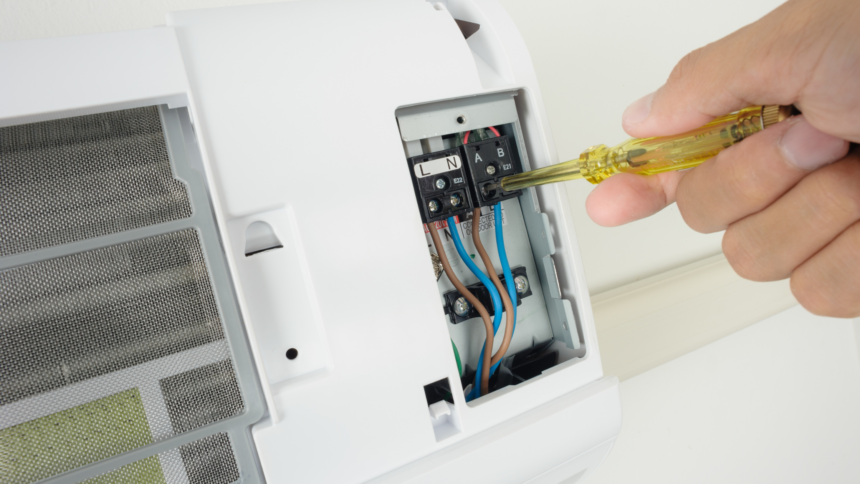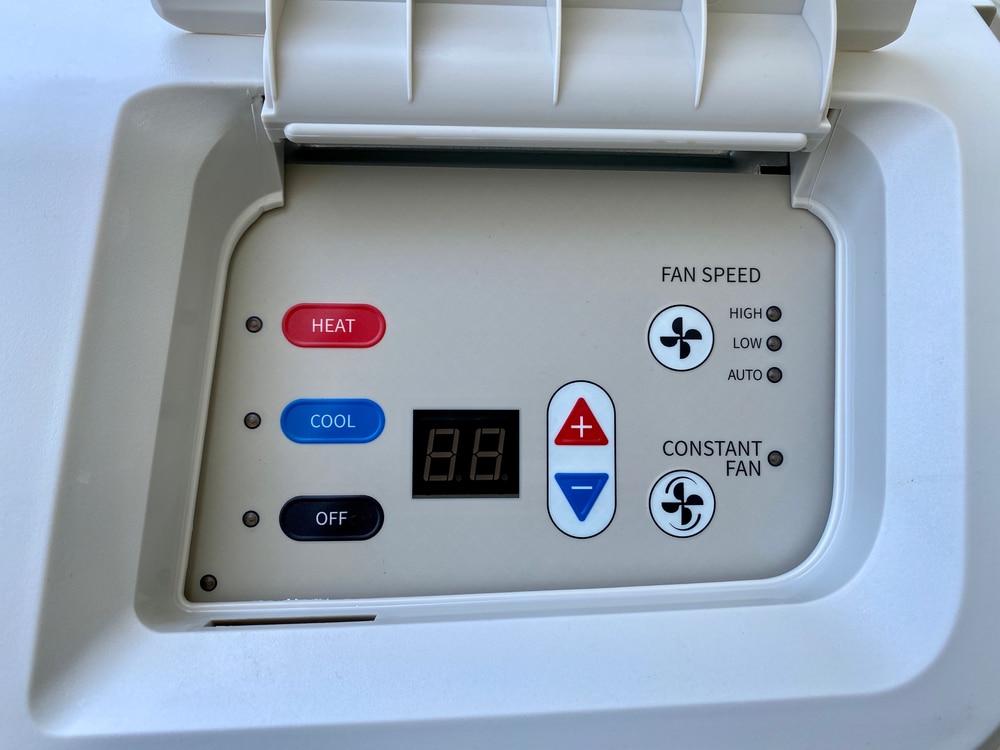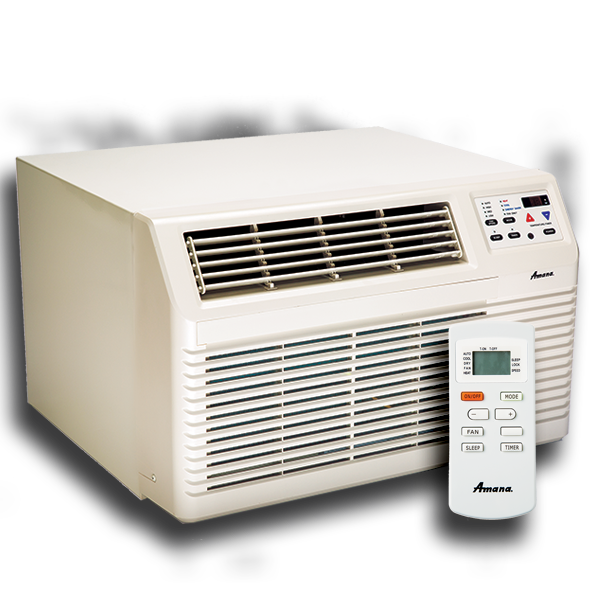Amana PTAC units are popular in hotels and apartments. They provide efficient heating and cooling.
But, like any machine, they can run into problems. Understanding how to troubleshoot your Amana PTAC unit can save you time and money. With the right manual, you can address common issues without needing a professional. This guide will help you identify and fix problems quickly.
From strange noises to temperature issues, we cover it all. Learn to keep your unit running smoothly and efficiently. Whether you are a building manager or a homeowner, this troubleshooting manual is a valuable resource. Dive in to find simple solutions and maintain your PTAC unit with ease.
Common Issues
Amana PTAC units are reliable, but sometimes they face common issues. Understanding these problems can help in quick troubleshooting. This section covers two frequent issues: the unit not turning on and inconsistent temperature control.
Unit Not Turning On
If your Amana PTAC unit is not turning on, check the power source first. Ensure the unit is plugged in properly. Confirm that the circuit breaker has not tripped. A tripped breaker can stop the unit from receiving power.
Next, inspect the power cord for any damage. A damaged cord can prevent the unit from turning on. Replace it if necessary. Also, verify that the control panel is functioning. Sometimes, a faulty control panel can cause the unit to remain off.
Inconsistent Temperature Control
Inconsistent temperature control can make your room uncomfortable. Start by checking the thermostat settings. Make sure the thermostat is set to the desired temperature.
Clean the filters regularly. Dirty filters can block airflow and affect temperature control. Also, inspect the unit for any obstructions. Ensure that vents are clear and not blocked by furniture.
If the problem persists, the thermostat might be faulty. Consider replacing it. Regular maintenance can help prevent these common issues.

Credit: www.hvac.com
Basic Troubleshooting
Basic troubleshooting of the Amana PTAC unit can save time and money. Before calling a technician, try these simple steps. They address common issues and often resolve them. Below are some basic troubleshooting steps to follow.
Checking Power Supply
The first step in troubleshooting is to check the power supply. Ensure the unit is plugged in properly. Sometimes, a loose connection can cause the unit to stop working.
- Check the main power switch is turned on.
- Inspect the circuit breaker for any tripped switches. Reset if necessary.
- Use a multimeter to check the outlet voltage. It should be within the acceptable range.
If the power supply is not the issue, move on to the next troubleshooting step.
Resetting The Unit
Resetting the unit can solve many problems. Follow these steps to reset your Amana PTAC unit:
- Turn off the unit using the power switch.
- Unplug the unit from the power outlet.
- Wait at least 5 minutes. This allows the system to reset.
- Plug the unit back in and turn it on.
If the unit still does not work, consult the Amana PTAC troubleshooting manual for further guidance.
Advanced Troubleshooting
Understanding advanced troubleshooting for your Amana PTAC unit can save time and money. This guide provides detailed steps to diagnose and fix common issues. Ensure the unit is unplugged before inspection. Safety is paramount.
Inspecting Internal Components
Open the unit carefully. Look for visible signs of damage. Check for loose or disconnected wires. Examine the fan motor and compressor. Ensure they are secure and free from debris.
Use a multimeter to test internal components. This includes the thermostat, capacitors, and sensors. A faulty thermostat can cause inconsistent temperatures. Replace it if necessary.
| Component | Function | Signs of Fault |
|---|---|---|
| Thermostat | Controls temperature | Inconsistent temperatures |
| Capacitors | Store electrical energy | Unit won’t start |
| Sensors | Detect temperature changes | Inaccurate readings |
Addressing Electrical Problems
Electrical issues are common in PTAC units. First, check the power cord. Ensure it is not damaged. Replace if necessary. Check the circuit breaker. Reset it if tripped.
Inspect the control board for signs of burning or damage. Use a multimeter to test for continuity. If the board is faulty, it must be replaced.
- Turn off the power supply.
- Remove the control board.
- Inspect for visible damage.
- Test with a multimeter.
- Replace if faulty.
Be sure to use the correct replacement parts. Incorrect parts can cause further damage. Consult the Amana PTAC Troubleshooting Manual for part numbers and specifications.
Maintenance Tips
Proper maintenance of your Amana PTAC unit is crucial for its efficient operation and longevity. By following these essential maintenance tips, you can ensure your unit runs smoothly and effectively. This guide will help you keep your PTAC unit in top shape with easy-to-follow steps.
Regular Cleaning
Regular cleaning of your Amana PTAC unit prevents dust and debris build-up. This improves air quality and maintains the unit’s efficiency. Follow these steps for regular cleaning:
- Turn off the unit and disconnect the power supply.
- Remove the front cover to access the internal components.
- Use a vacuum cleaner with a brush attachment to clean the coils and other internal parts.
- Wipe down the exterior with a damp cloth to remove dirt and grime.
Filter Replacement
Replacing the air filter regularly is vital for maintaining optimal air flow and indoor air quality. A dirty filter can restrict airflow and reduce efficiency. Follow these steps to replace the filter:
- Turn off the unit and disconnect the power supply.
- Remove the front cover to access the filter.
- Slide the old filter out and dispose of it properly.
- Insert the new filter, ensuring it fits snugly in place.
- Replace the front cover and reconnect the power supply.
These simple maintenance tips will help keep your Amana PTAC unit functioning efficiently. Regular cleaning and filter replacement are key to a well-maintained unit. Remember, a clean unit is an efficient unit.
Error Codes
Amana PTAC units are designed to provide comfort and efficiency. Sometimes, issues arise. The units display error codes to help identify problems. These codes simplify troubleshooting.
Understanding Error Codes
Error codes are short messages on the unit’s display. Each code points to a specific issue. Knowing these codes is crucial for fast fixes. Here are some common error codes and their meanings:
| Error Code | Meaning |
|---|---|
| E1 | Room temperature sensor error |
| E2 | Indoor coil temperature sensor error |
| E3 | Outdoor coil temperature sensor error |
| E4 | Compressor overload protection |
| E5 | Communication error between indoor and outdoor units |
How To Reset Error Codes
Resetting error codes can solve minor issues. Follow these steps to reset:
- Turn off the unit using the power button.
- Unplug the unit from the power source.
- Wait for at least 5 minutes.
- Plug the unit back in.
- Turn the unit on and check for the error code.
If the error code persists, further inspection may be needed. Contact a professional technician for help.

Credit: ptac4less.com
When To Call A Professional
Knowing when to call a professional for your Amana PTAC unit is crucial. Some issues are simple fixes, while others need expert attention. This section helps you identify severe problems and find a reliable technician.
Identifying Severe Issues
Some problems are too complex for DIY solutions. Does your unit make strange noises? Is there a burning smell? These could be signs of serious issues. If your unit leaks water, it might have internal damage. Electrical problems also need professional help. A tripped breaker or unit not turning on are red flags.
Finding A Reliable Technician
Finding the right technician ensures your unit is fixed properly. Start by checking online reviews. Ask friends or neighbors for recommendations. Ensure the technician is certified to work on PTAC units. This guarantees they have the necessary skills. Confirm their experience with Amana units specifically.
Also, check their availability. Quick service is important, especially in extreme weather. Contact them directly to discuss your issue. Clear communication helps them understand the problem better. It also helps you gauge their customer service.
Preventive Measures
Maintaining your Amana PTAC unit is essential for its longevity and efficiency. Preventive measures can help avoid unexpected issues and costly repairs. Below are some key steps to ensure your unit remains in optimal condition.
Scheduled Inspections
Regular inspections are crucial for identifying potential problems early. Schedule inspections at least twice a year. A good time to do this is before the start of the heating and cooling seasons.
- Check for loose connections.
- Inspect the filters and replace if necessary.
- Examine the coils for dirt and debris.
- Ensure thermostat is functioning properly.
| Inspection Task | Frequency |
|---|---|
| Filter Replacement | Every 3 months |
| Coil Cleaning | Every 6 months |
| Thermostat Check | Annually |
Proper Usage Guidelines
Understanding how to use your Amana PTAC unit correctly can prevent many common issues. Follow these usage guidelines to keep your unit running smoothly:
- Set the thermostat to a moderate temperature. Avoid extreme settings.
- Do not block the airflow. Keep furniture and other objects away from the unit.
- Use energy-saving settings whenever possible.
- Turn off the unit when not in use for extended periods.
By following these preventive measures, you can ensure your Amana PTAC unit operates efficiently and lasts longer. Regular inspections and proper usage are key to avoiding unexpected issues.
Resources
Troubleshooting your Amana PTAC can be easier with the right resources. This section will guide you on where to find essential information. These resources will help you resolve common issues with your unit. Let’s dive into the available resources.
User Manual
The User Manual is your first go-to resource. It contains detailed instructions and troubleshooting tips. The manual includes:
- Setup instructions
- Maintenance guidelines
- Error codes explanations
- Common troubleshooting steps
Having the user manual handy can save you time and effort. It is usually included with your unit. If you misplaced it, you can download it from the Amana website.
Customer Support Contacts
Sometimes, you need expert help. The Customer Support Contacts are there for you. They offer professional assistance with more complex issues. Here are the contact details:
| Contact Method | Details |
|---|---|
| Phone | 1-800-123-4567 |
| support@amana.com | |
| Live Chat | Available on the Amana website |
Reach out to customer support for personalized help. They can guide you step by step. This ensures your PTAC unit functions smoothly.

Credit: www.amana-ptac.com
Frequently Asked Questions
How Do I Reset My Amana Ptac Unit?
To reset your Amana PTAC unit, turn it off. Wait five minutes. Then turn it back on.
Why Is My Amana Ptac Not Cooling?
Check the thermostat settings. Ensure it’s set to “Cool”. Also, clean or replace the air filter.
What Does The Error Code E1 Mean On Amana Ptac?
Error code E1 indicates a communication fault. Check the thermostat wiring and connections for any issues.
How Do I Clean The Air Filter On My Amana Ptac?
Remove the front panel. Slide out the air filter. Rinse with water. Dry completely. Reinsert the filter.
Why Is My Amana Ptac Unit Making Noise?
Noise might be from loose parts, debris, or a failing motor. Inspect and tighten any loose parts. Clean any debris.
Conclusion
Troubleshooting your Amana PTAC unit doesn’t have to be complex. Follow the steps in our guide, and you’ll solve issues quickly. Regular maintenance can prevent many problems. Save time and money by doing small checks yourself. Always remember safety first.
If problems persist, contact a professional. Keep your unit running smoothly and enjoy reliable comfort.
